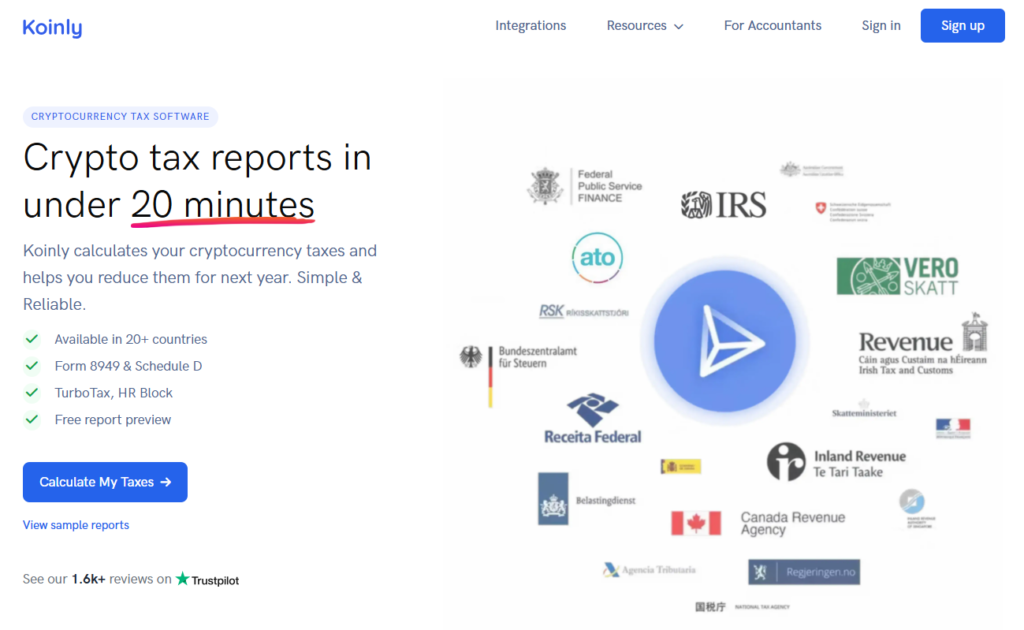For More Free Videos, Subscribe to the Rhodes Brothers YouTube Channel.
“If you’re not beating the amount of money being printed, then the value of every investment cannot keep up.” — John S. Rhodes, Rhodes Brothers
If you’ve ever looked at your bank account or investment portfolio and wondered why your efforts don’t seem to be paying off, you’re not alone. In a world where prices keep rising, wages lag behind, and your dollar doesn’t stretch like it used to, it’s easy to feel like you’re running on a treadmill going nowhere.
The problem isn’t that you’re not saving enough—it’s that your money is quietly losing value.
Inflation, money printing, and underperforming bonds are eroding the purchasing power of your wealth. And while many people still turn to traditional assets like treasury bonds or savings accounts, these so-called “safe” investments may no longer be enough to protect your future.
Here’s the refreshing truth: Bitcoin may offer a viable alternative. Despite its volatility, it has shown remarkable strength as a store of value over time. And if you understand how to use it smartly, it could be your best weapon against the silent thief that is inflation.
This blog post will explore:
- Why inflation is a bigger threat than most people realize
- How treasury bonds and fiat money are failing to keep up
- Why Bitcoin’s long-term performance makes it a potential safe haven
- How to get started with Bitcoin—even if you’re a beginner
The tools, strategies, and mindset you need to protect and grow your wealth in today’s environment
To quote John S. Rhodes of the Rhodes Brothers YouTube channel: “If you can hold Bitcoin for 4+ years, you’re likely to beat treasury bonds and even the hurdle rate used by Warren Buffett and Charlie Munger.”
That’s not hype—it’s a data-backed insight that could change the way you think about money forever.
TL;DR
- Inflation is steadily depleting the value of your money
- Traditional investments like bonds are no longer enough to protect your savings
- Bitcoin, when used strategically, can be a powerful hedge and long-term asset
- Learn how to start with Bitcoin—even with a small budget
- Discover tools, tips, and expert insights to invest wisely
- Avoid the most common mistakes that cost new investors time and money
- Understand the data behind Bitcoin’s historical and projected performance
- Get answers to the top questions people ask about Bitcoin as a safe haven
Why Bitcoin Might Be the Ultimate Safe Haven
When most people hear about Bitcoin, the first word that comes to mind is “volatile.” And yes, it’s true—Bitcoin’s price can swing wildly in a matter of days. But here’s what’s more important: volatility isn’t the enemy— inflation is. While volatility may feel uncomfortable in the short term, inflation quietly devours your wealth year after year, without you noticing until it’s too late.

That’s why Bitcoin, despite its price swings, is gaining serious attention as a long-term store of value. It’s not about avoiding every dip—it’s about preserving your purchasing power over time. Unlike traditional assets, Bitcoin is governed by a fixed supply (only 21 million will ever exist), making it resistant to the inflationary pressures that plague fiat currencies and many conventional investments. And thanks to platforms like Swan Bitcoin, Strike, and River Financial, it’s never been easier to start accumulating Bitcoin consistently through tools like dollar-cost averaging (DCA)—a method proven to reduce risk over time.
Understanding the Real Risk Today — It’s Not Volatility, It’s Inflation
Warren Buffett once said, “The arithmetic makes it plain that inflation is a far more devastating tax than anything that has been enacted by our legislatures.” And he’s right.
Inflation isn’t just a statistic you hear on the news—it’s a slow, silent force that erodes your savings, retirement funds, and investment returns. While CPI (Consumer Price Index) might suggest moderate inflation, the real issue is the rapid expansion of the global money supply (M2). According to insights from the Rhodes Brothers, M2 has been growing at an average rate of 7–7.5% annually. That means if your savings are sitting in a bank account or tied up in low-yield bonds returning 3–4%, you’re essentially losing money in real terms.
Even traditional “safe” investments like the 10-year U.S. Treasury bond—which currently yields around 4%—fall short of matching this monetary expansion. In other words, your purchasing power is quietly slipping away, even if your account balance looks stable on paper.

This is where Bitcoin stands apart. With its provable scarcity and growing adoption, it offers a fundamentally different proposition—an asset that can’t be inflated, diluted, or easily manipulated. And with the help of tools like Glassnode or LookIntoBitcoin, investors can track on-chain metrics, adoption trends, and valuation models to strengthen their conviction and inform smarter decisions.
How Bitcoin Outpaces Traditional Investments
Bitcoin’s wild price swings often dominate headlines, but the real story lies in its long-term track record. Over multi-year periods, Bitcoin has consistently outperformed traditional assets like stocks, bonds, and real estate. Investors who held Bitcoin for four years or more have historically achieved positive returns—often significantly so.
Even respected financial leaders like Michael Saylor, founder of MicroStrategy, have shared compelling projections:
- Conservative scenario: 21% annual growth
- Base case: 29% annual growth
- Optimistic scenario: 37% annual growth

Even if Bitcoin delivers only a portion of that performance, it still far exceeds the returns of traditional savings products or dividend stocks. And by using portfolio tracking tools like CoinTracker or Koinly, investors can maintain visibility over their performance while also staying compliant with tax regulations—a must for anyone serious about building long-term wealth.
Security also plays a vital role in this equation. Unlike stocks or fiat held at banks, Bitcoin can be self-custodied, meaning you have full control over your assets. With hardware wallets like Ledger Nano X or Trezor, and services like Casa for multi-signature protection, it’s possible to secure your Bitcoin in a way that no centralized institution can replicate.
Ultimately, Bitcoin is more than just an asset—it’s a tool that empowers individuals to opt out of a broken financial system and take control of their economic future. Whether you’re using apps to automate your savings, tracking your gains with smart tax software, or safely storing your holdings offline, the modern Bitcoin ecosystem is full of tools designed to make your journey efficient, secure, and sustainable.
Volatility is temporary. Inflation is permanent. Bitcoin may be your best chance to rise above both.
Actionable Steps to Leverage Bitcoin as a Safe Haven
If you’re just starting out with Bitcoin, the best approach is to keep it simple and low-risk. Begin by purchasing a small amount through trusted platforms such as Cash App, Strike, or Swan Bitcoin. These platforms are user-friendly and allow you to buy Bitcoin in small increments, making them ideal for learning the ropes without feeling overwhelmed. As you get more comfortable, consider using a strategy known as Dollar-Cost Averaging (DCA). This means investing a fixed amount of money on a regular schedule—like weekly or monthly—regardless of the current price. DCA helps minimize the impact of short-term price swings and encourages a long-term mindset.
Once you’ve accumulated some Bitcoin, it’s critical to secure your investment. Leaving your Bitcoin on an exchange exposes it to risks like hacks or platform shutdowns. Instead, transfer your Bitcoin to a hardware wallet, such as a Ledger Nano X or Trezor, which allows you to store your crypto offline and under your control. This step is essential for anyone planning to hold Bitcoin for the long haul. Speaking of holding, one of the most powerful strategies available to beginners is simply to hold your Bitcoin long-term. Historical data shows that those who hold for four years or more dramatically reduce their chances of loss and significantly increase their odds of strong returns.
For millennials, who are often more comfortable with digital tools, there are unique strategies to enhance your Bitcoin journey. Start by automating your investing. Apps like River Financial and Swan Bitcoin allow you to set up recurring purchases, so your investment grows without constant attention. This hands-off approach keeps you consistent and reduces emotional decision-making. You can also earn Bitcoin passively through tools like the Fold App, which gives you Bitcoin rewards for everyday purchases like shopping or gas. Over time, these small amounts can add up. As your Bitcoin holdings grow, consider upgrading your security with multi-signature wallets using services like Casa. These wallets require multiple approvals to move funds, offering a much stronger layer of protection against theft or loss.
If you’re nearing retirement, Bitcoin can still be a smart part of your portfolio—but with a more conservative approach. A common recommendation is to allocate 5% to 10% of your investments to Bitcoin. This size is small enough to limit your downside risk, but large enough to act as a hedge against inflation and fiat currency devaluation. To gain even more value, look into Bitcoin IRAs from providers like iTrustCapital, BitcoinIRA, or Choice by Kingdom Trust. These accounts allow you to hold Bitcoin within a tax-advantaged retirement framework, helping you protect gains from capital gains taxes and diversify your nest egg. For larger portfolios or more complex planning, services like Swan Private offer personalized financial guidance, including strategies for estate planning and inheritance. As with any investment, especially in retirement, proper planning ensures your Bitcoin holdings are secure and can be passed on to the next generation if needed.
No matter where you are in your financial journey, Bitcoin offers a flexible and powerful way to protect your wealth. Whether you’re buying your first $20 worth or integrating it into your retirement plan, these actionable steps can help you build a smart, secure, and profitable Bitcoin strategy.
Common Mistakes to Avoid
Bitcoin offers incredible potential for long-term wealth protection and growth—but only if you approach it with the right mindset. Many beginners (and even experienced investors) fall into traps that can cost them both money and peace of mind. Here are some of the most common mistakes people make when investing in Bitcoin—and how you can avoid them.
Mistake 1: Trading Bitcoin Frequently
One of the biggest misconceptions about Bitcoin is that it’s a game of timing. Many newcomers attempt to buy low and sell high, trying to outsmart the market with short-term trades. The reality? Most short-term traders lose money. Bitcoin’s price can swing dramatically in a matter of hours, and this volatility often leads to emotional decisions and poorly timed trades. The most successful investors are those who hold through the ups and downs, allowing the long-term trend—historically upward—to work in their favor.
What to do instead: Stick to a long-term strategy and use Dollar-Cost Averaging (DCA) to build your position steadily. This approach removes emotion and guesswork, helping you accumulate Bitcoin over time without trying to time the market.
Mistake 2: Leaving Bitcoin on Exchanges
It’s convenient to store your Bitcoin on the same platform where you bought it—but that convenience comes with serious risks. Cryptocurrency exchanges are frequent targets for hackers, and even well-known platforms have suffered major breaches in the past. Additionally, if an exchange goes bankrupt or freezes withdrawals, your funds could be lost or locked indefinitely.
What to do instead: After you purchase Bitcoin, transfer it to a cold storage wallet, like a Trezor or Ledger. These hardware wallets store your Bitcoin offline, making them far less vulnerable to hacks or third-party failures. If you don’t control your private keys, you don’t truly control your Bitcoin.
Mistake 3: Ignoring Taxes
Many Bitcoin investors are unaware that crypto transactions are taxable events in most countries. Whether you’re selling Bitcoin, trading it for another cryptocurrency, or using it to make a purchase, these actions can trigger capital gains taxes. Ignoring this can lead to unpleasant surprises during tax season—or worse, penalties and audits.
What to do instead: Educate yourself on your local crypto tax laws, and use tools like CoinTracker, Koinly, or ZenLedger to automatically track your transactions and generate tax reports. If your situation is complex, consult a tax professional who understands cryptocurrency.
Mistake 4: Reacting Emotionally to Price Drops
Bitcoin’s price can drop 20%, 30%, or even 50% in a short span of time—it’s part of the asset’s nature. Unfortunately, many investors panic during these drops and sell at a loss, only to watch the price rebound later. This emotional response not only locks in losses but also undermines the long-term strategy that makes Bitcoin so powerful.
What to do instead: Zoom out. Look at Bitcoin’s performance over a 4–5 year horizon, where it has consistently delivered strong returns. Accept volatility as part of the journey, and stick to your plan. If you’re using DCA and focused on long-term holding, short-term dips become buying opportunities—not causes for panic.
Frequently Asked Questions
Is Bitcoin too volatile to be considered safe?
Volatility affects short-term price movements, not long-term value. If you hold for 4+ years, historical data shows a high likelihood of gains.
Can I invest in Bitcoin without buying a whole coin?
Yes. Bitcoin is divisible. You can start with as little as a few dollars.
How do I keep my Bitcoin secure?
Use a hardware wallet like Trezor or Ledger. Avoid storing large amounts on exchanges.
What’s the best strategy for beginners?
Start small, dollar-cost average, and focus on long-term holding.
Is Bitcoin taxed?
Yes. Treat it like an asset. Use tax software such as CoinTracker or consult a CPA.
How much of my portfolio should be in Bitcoin?
A common recommendation is 1–5%, or up to 10% based on your risk tolerance.
What is the M2 money supply, and why does it matter?
It’s the total money in circulation. If it grows faster than your investments, your purchasing power declines.
Can Bitcoin be used for retirement planning?
Yes. Platforms like BitcoinIRA allow Bitcoin investments within tax-advantaged retirement accounts.
What if Bitcoin crashes?
Focus on long-term holding. Bitcoin has recovered from multiple crashes in the past.
Where can I learn more about Bitcoin?
Check out the Rhodes Brothers YouTube Channel for in-depth insights, strategies, and interviews.
Bitcoin as a Modern-Day Safe Haven
In a world of rising inflation, relentless money printing, and underwhelming returns from traditional investments like bonds and savings accounts, it’s clear we need to rethink what “safe” really means. The old playbook—save cash, buy bonds, and hope inflation stays low—isn’t just outdated. It’s dangerous for your long-term wealth.
Bitcoin isn’t perfect. It’s volatile. It’s still evolving. But when you zoom out and look at the data, the case becomes clear: Bitcoin, held with discipline and a long-term mindset, is one of the few assets that has consistently outpaced inflation and preserved purchasing power.
You don’t need to go all in. You don’t need to become a crypto expert overnight. You just need a plan, a little education, and the willingness to start.
Here’s what you can do today:
- Open a Bitcoin account on a beginner-friendly platform like Swan Bitcoin or Strike
- Set up a $20/month auto-buy strategy (Dollar-Cost Averaging)
- Watch a few educational videos from the Rhodes Brothers YouTube Channel
- Learn how to store your Bitcoin safely in a hardware wallet
- Commit to holding for at least 4 years
“Get started today by taking the first step—download a Bitcoin wallet, buy your first $10, and begin your journey toward financial sovereignty.”
Thank you for joining us for this deep dive into Bitcoin as a safe haven. If this article helped you or sparked your curiosity, subscribe to the Rhodes Brothers YouTube Channel for more insightful videos, strategy breakdowns, and tools to help you master wealth in the modern economy.
Resource List
Books
- The Bitcoin Standard by Saifedean Ammous
- Layered Money by Nik Bhatia
- The Price of Tomorrow by Jeff Booth
- Bitcoin Hard Money You Can’t Fck With* by Jason A. Williams
- Rich Dad’s Guide to Investing by Robert Kiyosaki
Podcasts
- What Bitcoin Did with Peter McCormack
- The Pomp Podcast by Anthony Pompliano
- Bitcoin Audible by Guy Swann
- Tales from the Crypt by Marty Bent
- Swan Signal by Swan Bitcoin
YouTube Channels
Tools & Platforms
- Swan Bitcoin – Dollar-cost averaging and Bitcoin-only investing
- River Financial – Bitcoin investing with concierge service
- Ledger Nano X / Trezor Model T – Cold storage hardware wallets
- Fold App – Earn Bitcoin rewards on everyday purchases
- CoinTracker – Crypto portfolio tracking and tax reporting
- Glassnode – On-chain analytics and market data



